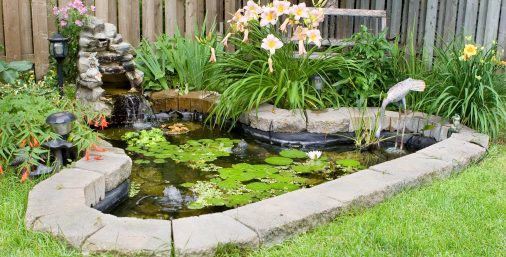Having your very own pond, right there in your garden, can bring you so much. The sights and sounds of water features are some of the most relaxing, and the wildlife that come with owning a garden pond can keep you and your family entertained and fascinated.
Many people are put off at the thought of building their own pond, but it’s actually not all that difficult to do, and just requires some proper planning, a good deal of elbow grease, and a bit of free time.
In addition to this, you need to know which steps to take in order to make a pond with the least amount of hassles and hiccups, so we are here to lend a hand in that department. Below you will find step by step instructions on how to make a pond in your garden.
Before you start
Prior to doing anything, there are a few decisions to make. The first one is what kind of pond are you going to have. The two main types are garden ponds and wildlife ponds. Garden ponds are usually built to house goldfish or koi carp and will often be more ornamental, with things like water features and ornaments.
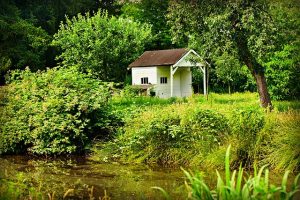
Wildlife ponds are easier to make, they don’t have fish in them, and are designed to attract other wildlife like frogs and water insects. Wildlife ponds are not only easier to make, they are cheaper too as they don’t require a water pump or electricity source.
The next thing to think about is the intended site of the pond and the size of the pond itself. Ideally, your pond will be placed in a part of your garden that isn’t too shaded, at least not all the time, as this can lead to a lack of plant life growing there.
You should also steer clear of areas too close to trees or you could end up damaging their roots when you make your pond.
Once you have a location in mind, you need to contact the relevant authorities to find out whether or not there are gas or electric works under the ground in that spot. You don’t want to go digging without checking and end up causing a power cut for the whole street or even having to evacuate due to a gas leak! I seriously doubt that would endear you to the neighbours.
Articles that may interest you if you build a pond:
Best water pumps rated for power and price
The size and depth of your pond is another factor to consider. You don’t want to take up your whole garden with you pond, nor do you want it to be a tiny little thing skulking away in the corner, invisible to the naked eye.
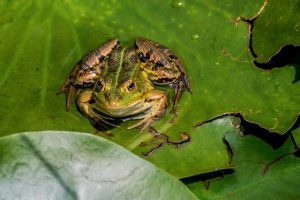
Depth is very important and will depend on what kind of pond you will install and what wildlife you intend to attract or house in it. Garden ponds for fish will have to be deep enough to house said animals, with a minimum of 1 metre for small goldfish and at least 1.5 metres deep for koi carp. Wildlife ponds with no fish can be as shallow as 0.6 metres, but no less.
Once you’ve decided on your type of pond, it’s size, and you’ve got your location picked out and checked to be safe, you can mark out the area on the ground using either rope, string and sticks, old hosepipe, etc.
Now that the ground is marked, it’s time to take a spirit level and see just how flat the ground is. For any type of pond, it is better to have a level surface because, as we all know, water doesn’t just sit there, it moves around, and if you have a slope, the water is all going to travel that way.
If you find that there is too much of a slope to your land, you should build up the lower side of it to even things out before starting to make your pond.
How to make a pond
Here comes the elbow grease! With everything planned and marked out, it’s time to start digging.
The hole that you dig should not be the same on all sides if you’re making a wildlife pond. There needs to be a shallow end that slopes down getting gradually deeper. This will allow for an emergency exit of sorts for any creature that happens to fall into your pond.
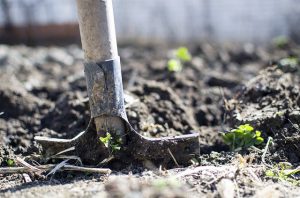
If you’re digging for a garden pond, there’s no need to have this gradual slope, but you will need to dig a deeper level in the centre of the pond where your water pump will eventually sit. This hole should be about a foot deeper than the level above it.
After your hole is dug, and you’re happy with it, you’ll need to add a layer of sand and burlap to line the pond with, or use a proper pond underlay in place of the burlap. Make sure that this layer covers every inch of the pond with no gaps or holes, and remove any stones, especially large, sharp ones, then cover the whole area with a waterproof pond liner. This liner needs to be bigger than the pond itself so that you have an overlap onto the ground level of your garden, making it easier to anchor down with rocks, top soil, or ornaments.
For garden ponds, this is when you will install your pump in the deeper centre section of the pond that you dug earlier.
Now you’re ready to fill your pond. Most people’s instincts would be to reach for the garden hose, but this might not be the best idea due to the nutrients found in the water in certain parts of the country.
In the North, the water comes from the Moors and this makes it suitable for a wildlife pond, but in the Southern areas of the UK, you’d probably be better off using rainwater that has been collected in water butts. You could also add a mix of tap water and water taken from a local pond or river.
Throwing in some topsoil can help create an inviting environment in a wildlife pond as it will simulate a more natural bottom to the pond, like what is found in rivers and streams.
Once the pond is filled, you can go about tidying up the edges and making the whole thing more pleasing to the eye by trimming off excess liner from the ground level and replacing turf.
Adding plants and ornaments, as well as water lilies can really give your pond a wonderful overall luck if you’re installing a garden pond, and of course adding some goldfish to watch swim around is a great idea. Just be careful that you don’t add too many fish at once and overcrowd the pond.
Also, if you’re going to have fish, you’ll probably need to install a filter to deal with the fish waste, or have plants that do the same thing.
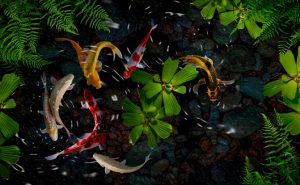
You can add goldfish to wildlife ponds too, but you have to wait for a year or so until the other wildlife has become established there.
And there you have it: how to make a pond. See? We told you it wasn’t that difficult.
We hope you’ve enjoyed this article and found it of some use, and would like to invite you to check out our other pages on gardening topics and product reviews.
We have pages covering all sorts of topics, with growing and planting tips on the most popular plants, flowers, and crops, articles on ways to deal with aphids and other pests, and a whole lot more.
We’ve also taken the time to test out all the latest gardening tools, equipment, and everything else you can think of, and gave you our honest opinions in our product review articles, so please feel free to browse away.
